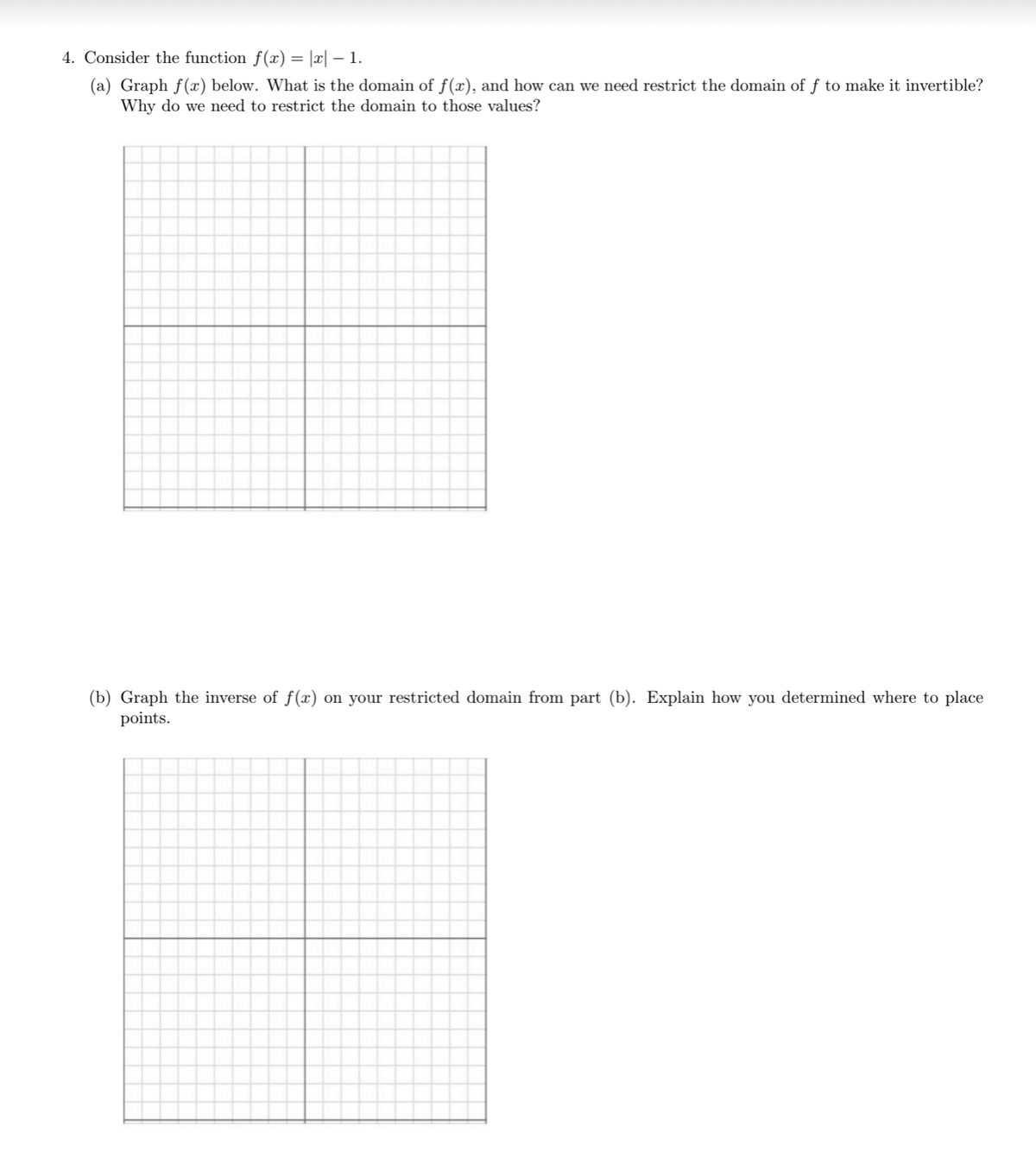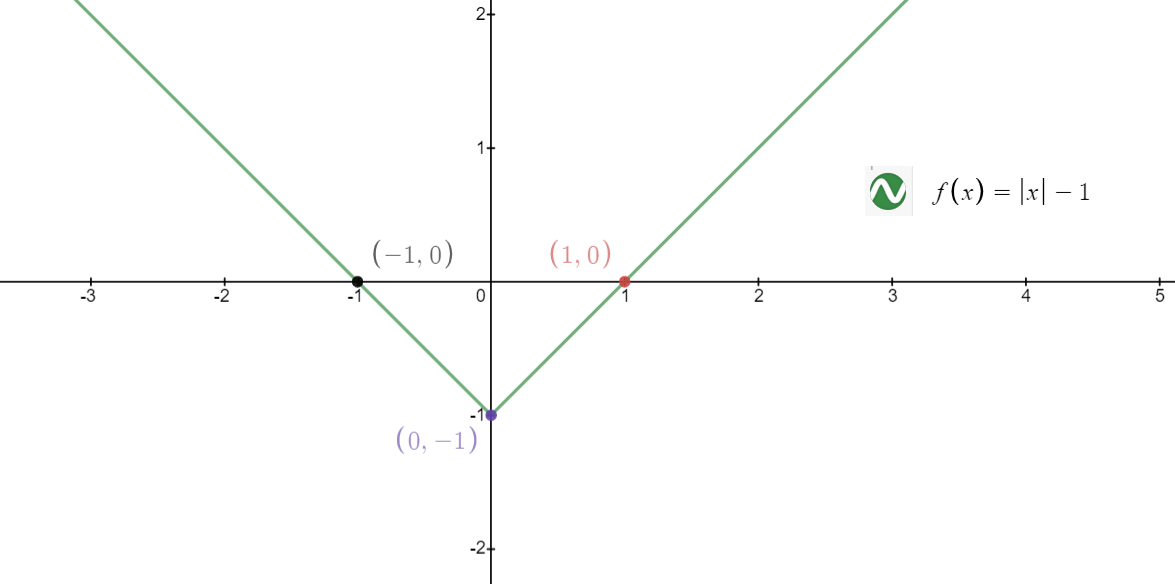Consider the function f(x) = |x| – 1. (a) Graph f(x) below. What is the domain of f(x), and how can we need restrict the domain of f to make it invertible? Why do we need to restrict the domain to those values? (b) Graph the inverse of f(x) on your restricted domain from part (b). Explain how you determined where to place points.
Consider the function f(x) = |x| – 1. (a) Graph f(x) below. What is the domain of f(x), and how can we need restrict the domain of f to make it invertible? Why do we need to restrict the domain to those values? (b) Graph the inverse of f(x) on your restricted domain from part (b). Explain how you determined where to place points.
Algebra & Trigonometry with Analytic Geometry
13th Edition
ISBN:9781133382119
Author:Swokowski
Publisher:Swokowski
Chapter5: Inverse, Exponential, And Logarithmic Functions
Section5.1: Inverse Functions
Problem 56E
Related questions
Question
Can you please explain in full detail.

Transcribed Image Text:4. Consider the function f(x) = |x| – 1.
(a) Graph f(x) below. What is the domain of f(x), and how can we need restrict the domain of f to make it invertible?
Why do we need to restrict the domain to those values?
(b) Graph the inverse of f(x) on your restricted domain from part (b). Explain how you determined where to place
points.
Expert Solution
Step 1
(a) Graph the function f(x) below.

Step 2
(b) Now, determine the inverse for f(x) for x>0.
Step by step
Solved in 3 steps with 2 images

Knowledge Booster
Learn more about
Need a deep-dive on the concept behind this application? Look no further. Learn more about this topic, calculus and related others by exploring similar questions and additional content below.Recommended textbooks for you

Algebra & Trigonometry with Analytic Geometry
Algebra
ISBN:
9781133382119
Author:
Swokowski
Publisher:
Cengage

College Algebra
Algebra
ISBN:
9781305115545
Author:
James Stewart, Lothar Redlin, Saleem Watson
Publisher:
Cengage Learning


Algebra & Trigonometry with Analytic Geometry
Algebra
ISBN:
9781133382119
Author:
Swokowski
Publisher:
Cengage

College Algebra
Algebra
ISBN:
9781305115545
Author:
James Stewart, Lothar Redlin, Saleem Watson
Publisher:
Cengage Learning
